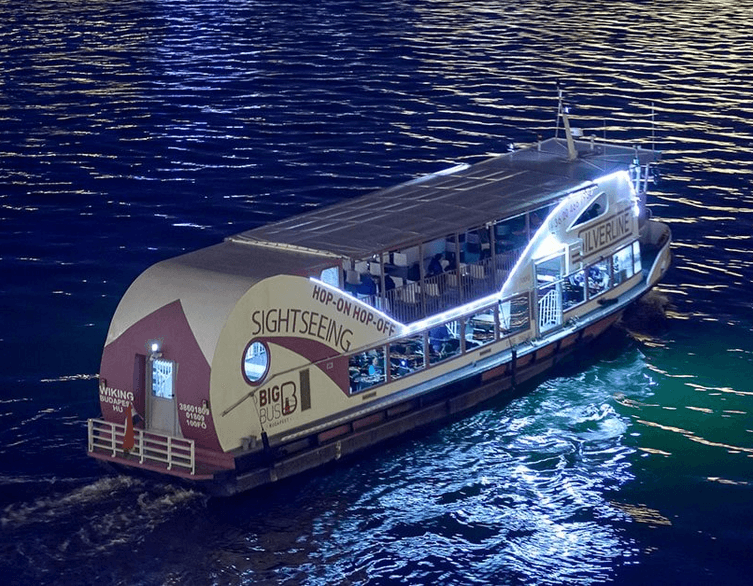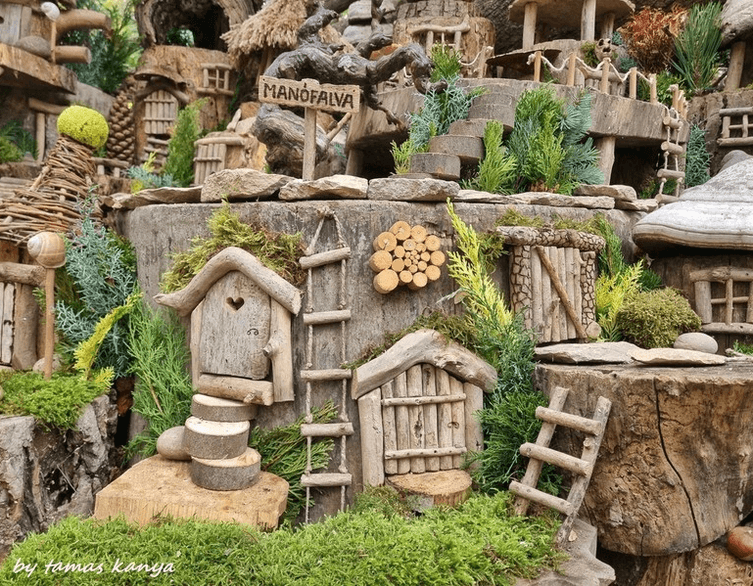The Fairy Village That Disappeared: A Sad Tale from Budapest’s Bike Path

When Art Meets Vandalism Along the Danube
For one brief, magical week, a hidden corner along Budapest’s popular Szentendre cycling route became something extraordinary. Kánya Tamás, a land art artist known for his ephemeral creations made from pebbles, bark, and driftwood, had just completed “Manófalva”—Fairy Village—a whimsical installation of miniature houses, ladders, terraces, and sculptures that delighted cyclists and families passing by. The free attraction drew crowds of curious visitors eager to peek into the tiny world he’d painstakingly crafted. But the fairy tale ended abruptly. Less than a week after opening, someone destroyed it completely.
A Labor of Love Reduced to Rubble
Kánya announced the opening of Manófalva on Monday. By Thursday and Friday, he had finished the final details—tiny rope ladders, decorative elements, and intricate sculptural touches that made each miniature dwelling feel alive with personality. He left the site around 4:30 PM on Saturday evening. By Sunday morning, everything was gone. The houses, sculptures, ladders, and terraces had been smashed to pieces. Elements were scattered ten meters away, deliberately broken beyond repair. Log benches were overturned, components destroyed with apparent intent.
The artist’s Facebook post captured the heartbreak and exhaustion. He explained that restoring the village felt both impossible and pointless—whoever had done this could return at any time. The meticulous work of building each tiny, detail-rich element had taken immense effort, and now it was reduced to debris. Manófalva lasted exactly one week. It couldn’t even survive its first busy weekend.
Best deals of Budapest
The Philosophy Behind Transient Art
Kánya Tamás doesn’t create art meant to last forever. His stone sculptures, mandalas, and mud figures embrace impermanence—they speak to the fleeting nature of moments and the inevitability of change. His works, often built directly into natural landscapes, invite viewers to reconsider the relationship between art and nature. As the cultural website kultura.hu noted, his creations aren’t just for his own enjoyment; they’re designed to surprise, delight, and uplift anyone who encounters them.
Along the Szentendre bike path—a scenic route stretching along the Danube from Budapest toward the charming riverside town of Szentendre—Kánya’s installations have become small landmarks. Cyclists often stop to admire his pebble patterns or photograph his sculptures. His Facebook page has thousands of followers who eagerly track his latest projects. Manófalva was supposed to be his most ambitious yet: a free, accessible artwork that invited children and adults alike to step into a miniature fantasy world.
Why Did This Happen?
In his post, Kánya hinted at possible motives behind the destruction. He mentioned that some cyclists and local residents had complained about the installation, perhaps viewing it as an obstruction or an unwelcome intrusion. His final, bitter words acknowledged their victory: the “problem” had been solved. Manófalva was gone, and those who were bothered by it could now pass by undisturbed.
The incident raises uncomfortable questions about public art, shared spaces, and community values. Was this an act of mindless vandalism, or a deliberate statement against the installation? Should public spaces along bike paths remain strictly utilitarian, or is there room for spontaneous creativity and beauty? And what does it say about a city when someone feels compelled to destroy something harmless, free, and designed purely to bring joy?
The Loss for Budapest and Its Visitors
For tourists cycling the Danube path—one of Budapest’s most beloved outdoor experiences—Manófalva would have been a unexpected gem. The route already offers stunning views of the river, charming villages, and peaceful stretches of nature. A whimsical fairy village would have added a layer of magic, especially for families traveling with children. Instead, that opportunity is now lost, not because the artist chose to dismantle it, but because someone chose destruction over coexistence.
Kánya salvaged what he could—a few small doors, rope ladders, and pieces—but the rest is gone. He made it clear: there’s nothing left to see. Manófalva has closed its gates permanently.
A Reminder About the Fragility of Beauty
This story isn’t just about one artist’s ruined project. It’s a reminder of how fragile beauty can be, and how easily communal spaces can become battlegrounds over differing visions of what belongs there. Kánya Tamás built Manófalva knowing it wouldn’t last forever—his art embraces impermanence. But there’s a difference between natural decay and deliberate destruction, between time eroding a sculpture and a person smashing it to pieces overnight.
For those who follow Kánya’s work or discovered Manófalva through word of mouth, the loss stings. But perhaps the story also serves as a catalyst for reflection. How do we, as a community—locals and visitors alike—want to treat the unexpected moments of creativity that appear in public spaces? Do we nurture them, or do we tear them down?
Manófalva may be gone, but the conversation it sparked about art, public space, and respect for creative expression will likely continue long after the last pebble has been swept away.
Related news

















